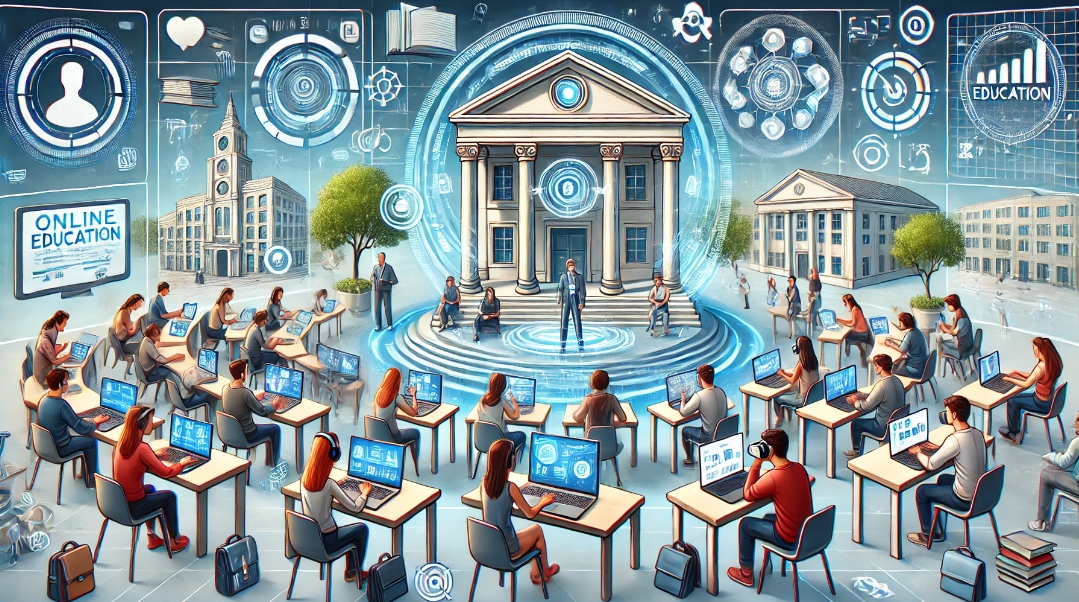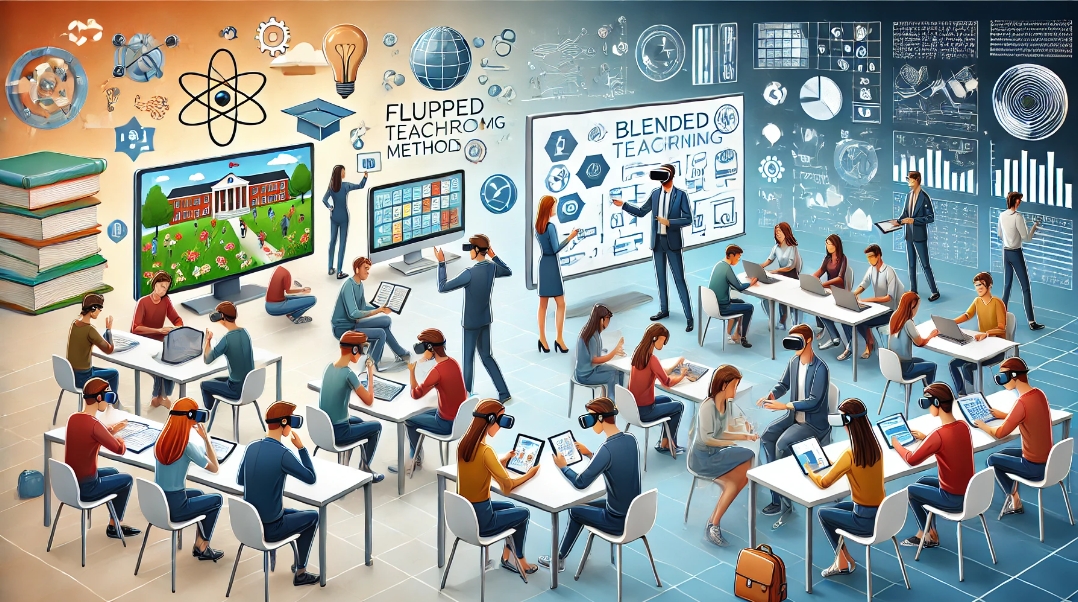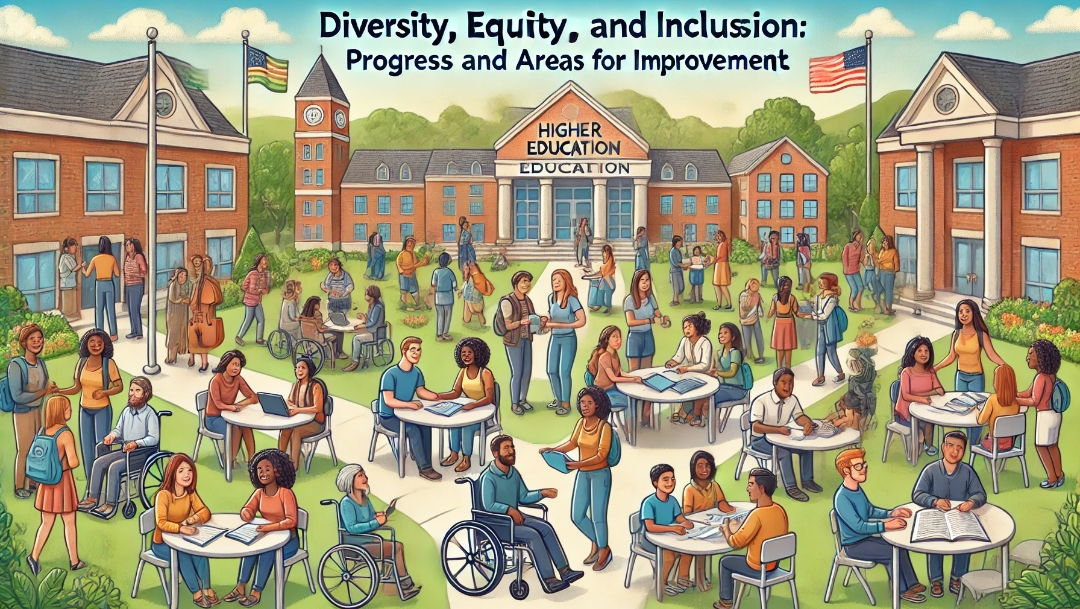The Impact of Online Learning on Higher Education

In recent years, online learning has transformed higher education, revolutionizing how students access and engage with academic content. The COVID-19 pandemic accelerated the shift towards digital education, with institutions worldwide adopting online platforms to continue teaching. As technology advances, online learning has become a permanent fixture in the educational landscape. This article explores the impact of online learning on higher education, examining its benefits, challenges, and long-term implications for students, educators, and institutions.
The Rise of Online Learning
Online learning has gained traction over the past decade due to its convenience, accessibility, and flexibility. Advances in technology have made it possible for students to access high-quality education from anywhere in the world, breaking down traditional barriers of time and location.
Key Factors Driving the Rise of Online Learning
- Technological Advancements: The widespread availability of high-speed internet and digital devices has made online learning more accessible. Tools like video conferencing, learning management systems (LMS), and digital collaboration platforms have enabled seamless virtual classrooms.
- Changing Student Demographics: Today’s students include working professionals, parents, and individuals seeking to upskill or change careers. Online learning accommodates diverse schedules, allowing learners to balance education with personal and professional responsibilities.
- Globalization of Education: Online learning enables institutions to reach a global audience, attracting students from different countries and backgrounds. This has led to increased diversity in virtual classrooms and expanded opportunities for cross-cultural exchange.
Example
A working parent can pursue a degree online without sacrificing job responsibilities or family time, thanks to the flexibility of asynchronous classes and access to recorded lectures.
Benefits of Online Learning
Online learning offers numerous advantages that enhance the educational experience for students and educators alike. These benefits contribute to the growing popularity and adoption of digital education in higher education.
1. Flexibility and Convenience
One of the most significant benefits of online learning is its flexibility. Students can access course materials, lectures, and assignments at any time, allowing them to study at their own pace and on their schedule.
- Self-Paced Learning: Online courses often allow students to progress through material at their own speed, accommodating different learning styles and paces.
- Accessibility: Students can attend classes from anywhere with an internet connection, eliminating the need for commuting and making education accessible to those in remote or underserved areas.
2. Cost-Effectiveness
Online learning can be more cost-effective than traditional classroom-based education, reducing expenses associated with commuting, housing, and printed materials.
- Lower Tuition Fees: Many online programs offer lower tuition rates compared to on-campus programs, making higher education more affordable.
- Reduced Additional Costs: Online students save on costs related to transportation, campus housing, and meal plans, further reducing the overall cost of education.
3. Wide Range of Course Offerings
Online learning platforms provide access to a diverse array of courses and programs, from certificates and diplomas to full degrees in various disciplines.
- Variety of Subjects: Students can choose from a broad spectrum of subjects, including niche fields and specialized courses not available at local institutions.
- Continuous Learning: Online learning supports lifelong learning, enabling individuals to pursue education at any stage of life, whether for career advancement or personal enrichment.
4. Enhanced Learning Resources
Digital platforms offer a wealth of resources that enhance the learning experience, including multimedia content, interactive simulations, and digital libraries.
- Engaging Content: Videos, animations, and interactive quizzes make learning more engaging and help reinforce complex concepts.
- Access to Experts: Online courses often feature guest lectures and content from leading experts and industry professionals, providing students with valuable insights.
Challenges of Online Learning
Despite its many advantages, online learning also presents challenges that can impact the effectiveness of education and the student experience. Addressing these challenges is crucial for maximizing the benefits of digital education.
1. Lack of Face-to-Face Interaction
One of the primary drawbacks of online learning is the absence of in-person interaction, which can affect student engagement, motivation, and the development of social skills.
- Limited Networking Opportunities: Online students may miss out on the networking and relationship-building opportunities that occur in traditional classroom settings.
- Isolation: The lack of physical presence can lead to feelings of isolation and disconnection from peers and instructors, impacting mental well-being.
2. Technical Issues and Digital Divide
Online learning relies heavily on technology, making it susceptible to technical issues and accessibility challenges, particularly for students in low-income or rural areas.
- Technical Difficulties: Issues such as internet connectivity problems, software glitches, and hardware malfunctions can disrupt the learning process.
- Digital Divide: Not all students have access to reliable internet and digital devices, creating disparities in educational opportunities.
3. Self-Discipline and Time Management
Success in online learning requires strong self-discipline and time management skills, as students must navigate the demands of coursework without the structure of traditional classrooms.
- Procrastination: The flexibility of online learning can lead to procrastination and poor time management, resulting in missed deadlines and lower academic performance.
- Motivation: Without regular face-to-face interaction and a structured schedule, some students may struggle to stay motivated and engaged in their studies.
4. Quality Assurance
Ensuring the quality of online education is a significant concern, as the rapid expansion of digital learning has led to varying standards and accreditation issues.
- Variability in Course Quality: The quality of online courses can vary widely, with some programs lacking rigorous academic standards and comprehensive content.
- Accreditation Concerns: Not all online programs are accredited, which can affect the recognition of qualifications by employers and other institutions.
Long-Term Implications for Higher Education
The impact of online learning on higher education is profound, with long-term implications for institutions, educators, and students. As online education continues to evolve, it is likely to shape the future of learning in several key ways.
1. Blended Learning Models
The integration of online learning into traditional education models is leading to the rise of blended learning, which combines online and face-to-face instruction. This hybrid approach offers the best of both worlds, providing flexibility while maintaining personal interaction.
- Enhanced Learning Experience: Blended learning allows for a more dynamic and interactive educational experience, catering to different learning styles and preferences.
- Scalability: Institutions can reach more students by offering blended learning options, making education more accessible without compromising quality.
2. Global Reach and Collaboration
Online learning facilitates global collaboration, allowing students and educators to connect across borders and participate in international learning communities.
- Cultural Exchange: Students can engage with peers from different cultural backgrounds, gaining diverse perspectives and fostering cross-cultural understanding.
- Collaborative Projects: Online platforms enable collaborative research and projects, bringing together experts and students from around the world to address global challenges.
3. Continuous Innovation
The rapid pace of technological advancements ensures that online learning will continue to evolve, with new tools and methods enhancing the delivery and effectiveness of education.
- Artificial Intelligence: AI-driven learning platforms can provide personalized learning experiences, adapting to individual student needs and preferences.
- Virtual Reality: VR technology has the potential to create immersive learning environments, offering hands-on experiences in virtual labs, simulations, and field trips.
4. Reimagining the Role of Educators
The shift towards online learning is redefining the role of educators, with a greater emphasis on facilitation, mentoring, and providing personalized support.
- Facilitators of Learning: Educators in online settings act more as facilitators, guiding students through the learning process and encouraging independent exploration.
- Focus on Student Support: With the challenges of online learning, there is an increased need for academic and emotional support services, requiring educators to be more attentive to student well-being.
Conclusion
The impact of online learning on higher education is transformative, offering unprecedented opportunities for accessibility, flexibility, and innovation. While online education presents challenges, such as maintaining engagement and ensuring quality, its benefits far outweigh its drawbacks. As institutions continue to adapt and refine their online offerings, the future of higher education will likely be characterized by a blend of digital and traditional learning, fostering a more inclusive, diverse, and dynamic educational landscape. By embracing the potential of online learning, higher education can continue to evolve, meeting the needs of a rapidly changing world and preparing students for success in an increasingly digital age.




